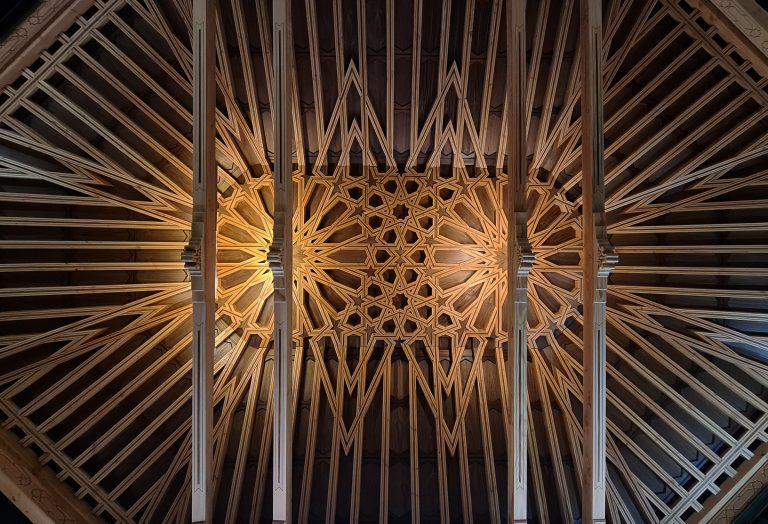LOS ANGELES—The Museum of Jurassic Technology (MJT) specializes in encyclopedic museum wonders from bygone eras, blending art and science, fact and fiction, history and fantasy. Since its founding in 1988, the museum has hosted exhibitions on a variety of topics, some of which have questionable authenticity, including Hagop Sandaldjian’s miniatures, Ricky Jay’s collection of rotting dice, Cameroon’s stinking ants, and Soviet space dogs. This September, as part of the upcoming PST ART initiative, which focuses on the intersection of art and science, the museum will undertake its most ambitious endeavor yet: an exploration of Islamic architectural forms created in Spain between the 9th and 16th centuries..
“This is without a doubt the largest project we have ever done at the museum,” said museum founder David Wilson. Allergic of Veiled Gazelle – Suggestions of Infinity and Eternity – Islamic Geometry in Medieval Al-Andalus.
The exhibition’s roots, however, lie far away in Spain, but in the Central Asian country of Uzbekistan, where Wilson and a small team traveled in 2007 during the filming of the film. The Great Decline of the Soviet UnionThe film chronicles the story of Soviet astronomers who emigrated from Leningrad to Uzbekistan in the 1930s to escape Soviet oppression.
“We were amazed by the beauty of these architectural remains…especially the honeycomb-like geometric forms known as muqarnas,” Wilson explains. Muqarnas are essentially highly decorative angled arches, an architectural element that marks the transition from straight walls to curved domes. The centuries-old structures first appeared in Iran and Uzbekistan, but can be found across the Islamic world, including in al-Andalus, the part of the Iberian Peninsula that was ruled by Muslims from 711 to 1492.

With his MacArthur Foundation-winning fusion of technology and creativity, Wilson was invited by the Getty Foundation several years ago and encouraged to submit a proposal for the PST program, which launched this fall. He received two grants totaling $210,000 to research and implement Veiled Gazellefocusing on the development of muqarnas and lace, Another type of Islamic geometric decoration, made up of intersecting lines, was common in Muslim Spain. Wilson notes that the Andalusian versions of these forms are unique because they represent a marriage of Islamic design with European building practices, especially wood.
The grants have financed trips to Spain to see important examples of these forms, including the Alhambra. The museum has also worked with artist Ángel María Martín, founder of the Interpretation Center for Mudéjar Woodcarving in Ávila, who spent three weeks in Los Angeles in 2022 teaching Wilson and his team “how to make these crazy ceilings out of wood,” Wilson said. After Martín left, the MJT team was tasked with emulating his techniques, using traditional plaster and carpentry as well as 3D printing to make all the elements in their studio, the largest of which is a lacería ceiling measuring approximately 22 by 15 feet.

Despite the significant support the Getty has received, additional funding is needed to make the project a reality. In April, the Mike Kelley Foundation announced the recipients of its fourth annual Operating Support Grants, a program originally established during the pandemic to support the immediate needs of Los Angeles County arts organizations. Grants totaling $400,000 were awarded to a range of established and emerging organizations, including LAXART and REDCAT, Coaxial Arts Foundation, Self-Service Graphics, Human Resources, and Fulcrum Arts. MJT received $28,000 to bring a new permanent exhibition across three gallery spaces to life.
Wilson’s interest in Andalusian muqarnas and lacería stems not only from their stunning aesthetic and mathematical qualities, but also from the social and political forces that made them possible. This era is often referred to as the Period of Coexistence, a period of relative harmony and exchange between Muslim, Christian, and Jewish communities in medieval Spain, from the Muslim conquest to the Catholic Reconquista in 1492.
“Scholars, artists, scientists, musicians are all working together. There’s a lot of translation between Hebrew, Arabic and Latin,” Wilson said. “Given the current state of the world we live in, I feel like that’s an important thing to discuss as well.”



